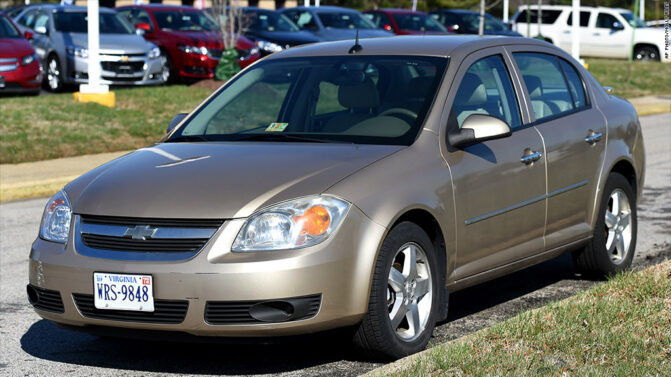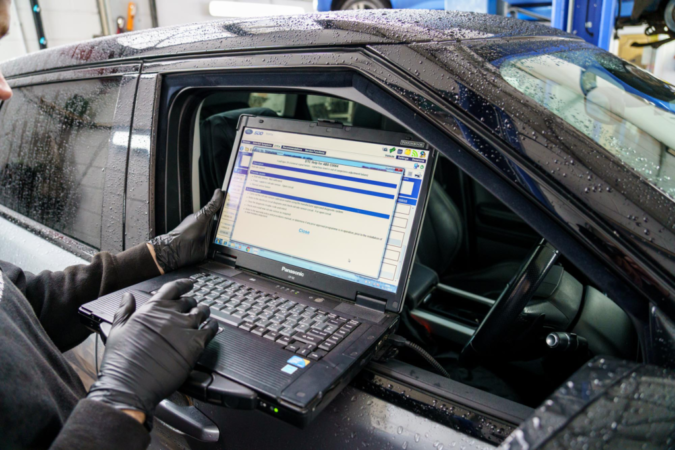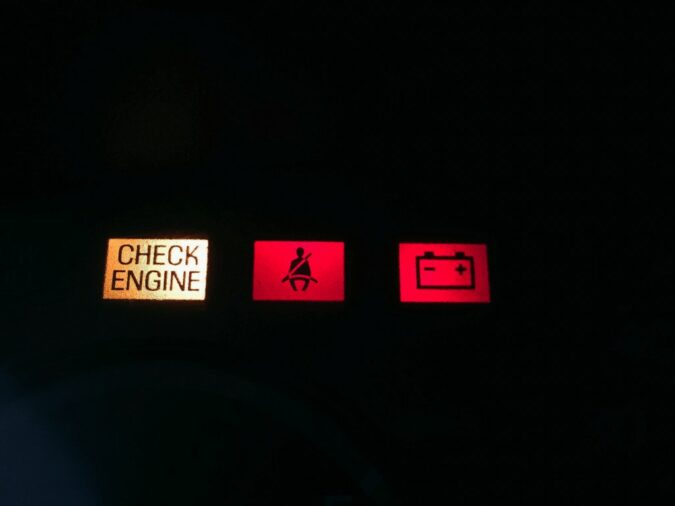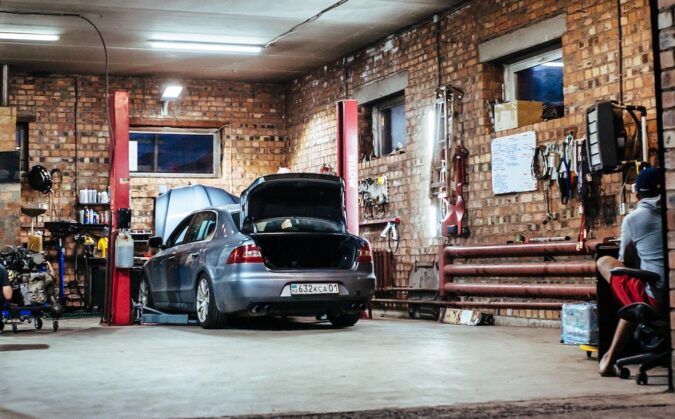Have you started experiencing some weird symptoms on your Chevy like a check engine light and frequent engine misfires? And you diagnosed the code P0171 Chevy? Well, if that is the case, then you are at the right place because there will be a lot to cover on this topic.
Having a problem like this with a check engine light can be really frustrating to deal with at some point and people are starting to give up on it and pretend that it doesn’t exist. Which is a good thing if you are having a non-serious problem.
Some check engine lights are only there to annoy us, to be honest. But in my opinion, everything happens for a reason. And so is the case with this code. That’s why you need to do some troubleshooting and learn more about how everything works on your car and all the possibilities that are out there. You need to create a plan for how you can tackle this issue. But you shouldn’t worry because we are going to help you out with that in this article.
First, we are going to cover the basics of car diagnostics. Then we will take a look at the P0171 Chevy and its meaning and how serious is it. After that, we will discuss the causes of this problem and the symptoms. Then we will learn how to diagnose and tackle this problem. So, if you want to learn more about this trouble code and how to deal with it, please follow along.
Introduction To Car Diagnostics
Now before we dive into more complex stuff and understand what the code P0171 Chevy means, let’s first cover some of the basics of car diagnostics. We just need to introduce beginners to this way of problem-solving and how it is done. If you feel like you have the grasp of the knowledge needed, you can jump to the problem. If not, keep up with us for a bit. Now let’s cover the basics of diagnostics.
Nowadays cars are not like they were 30 or 40 years ago. Back in the day, everything was analog. Nowadays we live in a digital age where everything is driven by a wire. Which is good and bad at the same time.
Old classic motors were really easy to diagnose since there were no sensors and computers. There were only a few options. Tweak up the carburetor, adjust the valves, and do some simple tune-ups.
Modern cars are all driven by a computer. Also known as ECU, you will come across the acronym ECM or PCM. But you shouldn’t worry because they are the same thing.
Every sensor is connected to this unit and feeds the computer with information. And there are a ton of sensors. Whenever there is a problem with the work of the engine there are reports sent to it. These reports are then evaluated by the ECU and whenever it notices something wrong, you get the check engine light.
And the only way you can diagnose this problem is through a tool that is known as an OBD2 scanner. This device connects to the computer and you get the input from it. More precisely, in this case, the P0171 Chevy. But what this P0171 code means? Let’s see up next.
P0171 Chevy, What Does It Mean?
Now as we covered what is car diagnostics and what tools you need, we can dive into more complex topics. Namely, the P0171 Chevy code. What this code means and what type of problem does it represent? Let’s find out.
The P0171 Chevy is a DTC trouble code. The simple definition for the P0171 code is System Too Lean (Bank 1). But what does this means in the first place?
Well, this means that there is a problem with the fuel to air mixture on bank 1. But what is bank one and what is fuel to air mixture? Let’s explain.
If you are running a V8 engine or another engine that is in V configuration, it means that there is a lean air to fuel mixture on the first bank. This bank is the one where cylinder number one is located. More precisely the bank on the left side when you look at the car from the front.
This lean fuel to air mixture note means that there is too much air in the system on that bank. The optimum ratio is 14.7:1. Meaning that there should be 14.7 parts of air for every 1 part of fuel.
If there is too much air something like 16:1, then the system will run lean and you will get the code P0171 Chevy.
So, in this case, the car runs lean. Meaning that there is unmetered air entering the intake. The computer detects this anomaly and is triggered by it. Showing you the check engine light in the process and the P0171 code. But is this code a serious problem that should worry you? Let’s find out in the following chapter.
How Serious Is This Trouble Code P0171 Chevy?
We learned that the P0171 Chevy code means that there is a lean air to fuel mixture on the first bank of your engine. Now let’s learn more about the level of concern that this error code has.
And to be honest, it is concerning. Whenever you have a problem like this, you will face some symptoms that would be really uncomfortable to deal with.
The engine work will be a bit off and the engine will not be happy at all working this way. The engine will not get damaged by this problem.
But some of the components such as the spark plugs will get damaged. When the air to fuel mixture is lean, they can develop blisters and this blistering could basically ruin the spark plugs on all of the cylinders on bank 1.
In addition to this, the O2 sensor that is mounted before the catalytic converter could also get damaged with the engine running like this, and also the catalytic converter could take a toll. And these converters are really expensive pieces.
This is why you need to diagnose the P0171 Chevy code as soon as possible if you want to prevent something of this from happening to your car. But what are the causes for the P0171 Chevy Silverado? Let’s find out in the next chapters.
Causes For The P0171 Chevy
Now as we cleared the basics of this problem with the P0171 Chevy Silverado, let’s now cover the causes of this problem.
What could make this check engine light and this code ruin your day? Let’s elaborate in the following chapters.
1. Bad MAF Sensor
The first and most obvious cause for the P0171 Chevy Silverado is the problem with the bad MAF sensor. This sensor is also known as a mass airflow sensor.
What this sensor does is that it measures the air that gets into the engine from the intake. And what happens sometimes is that this sensor fails and gives bad readings to the ECU.
Then in the engine intake, there is a ton of air that enters and is not measured right. This will cause the engine to run lean since there are more parts of air than needed.
So, whenever you have this problem with your car it is advisable to check this sensor and clean it off. You can also troubleshoot it with a multimeter and see if it works well. If it does not, then replace it.
2. Vacuum Leak In The Intake Manifold
Vacuum leaks from the intake manifolds are a common thing on Chevy engines and a common cause of the P0171 Chevy Silverado problem.
Both the intake manifolds can crack since they are plastic. As well as the gaskets on the intake can leak and allow unmetered air to enter the intake.
It is advised to check this component when you have a problem like this.
3. Open PCV Valve
The PCV valve can also cause this problem with e P0171 Chevy Silverado. The PCV valve redirects the gases that are formed in the crankcase into the intake.
It should open whenever needed. But sometimes it could fail and develop issues in the car because there will be unmetered air into the intake. Resulting in lean air to fuel mixture. A component that is essential to check.
4. Vacuum Hose Leak
Leaks on other vacuum hoses are also one of the causes of the P0171 Chevy Silverado code. You will need to check all of the vacuum hoses that go to the bank 1 of your engine.
Maybe some of these hoses leak and cause this type of problem. And frankly, some cars are notorious for developing cracks on these hoses and causing issues like these.
5. Bad O2 Sensor On Bank 1
The next very probable cause for the P0171 Chevy is the situation with the bad O2 sensor that is in charge of bank 1.
This sensor is located after the exhaust manifold. In fact, in most cars, there are two of them. One before the catalytic converter and one after this catalytic converter.
They basically measure the flow of gases in the exhaust and help the computer to determine the fuel to air mixture. Sometimes though, they can fail and cause malfunctions. Resulting in poor engine work and P0171 Chevy code.
6. Leak From The Exhaust Manifold
A leak from the exhaust manifold can also be the cause of the P0171 Chevy Silverado code. Why is this the case?
Well, on some engines the bolts are cracking on the exhaust manifolds. Causing the exhaust gases to leak out. And when there are leaks, the O2 sensor will get wrong readings and will try to adjust the fuel to air mixture.
Sometimes it will throw a code like this one and cause you a headache. This is why you need to check these components as well if you want to make sure that there is nothing going on with them.
7. Low Fuel Pressure Or Bad Injectors
And the last cause for the P0171 Chevy that we would like to cover is the low fuel pressure. The low fuel pressure can be caused by some blockage in the injectors or possibly a fuel pressure regulator.
Both of these components can cause this issue and a low amount of fuel to enter the combustion that will result in lean air to fuel mixture. Now as we cleared out the causes, let’s dive into the symptoms.
Symptoms Of The P0171 Chevy
Now as we covered the causes of the code P0171, let’s now focus more on the symptoms that will be present when you experience a code of this kind.
As you probably know, whenever there is a problem there are symptoms. This is why we will cover them in detail in the following chapters.
1. Check Engine Light
The first and most obvious symptom that you are going to experience is the check engine light. But you are probably aware of it since you are here. You already diagnosed the P0171 Chevy Cruze code.
But there might be some other codes as well. Whenever you have a problem like this, there will probably be codes that are connected to other components. Namely the injectors, PCV valve, O2 sensor, MAF sensor, etc. All these will help you out in diagnosing the problem a lot quicker. So, you should pay attention to them in order to uncover the P0171 Chevy Cruze problem a lot quicker.
2. Engine Misfires
The second symptom of a P0171 Chevy Cruze that you are going to experience is the situation with the engine misfires.
An engine that has a poor fuel to air mixture will simply love to misfire and cause a ton of trouble for you the car owner. The explosions can be premature or delayed.
These misfires will also damage your spark plugs and cause blisters to develop on them. In addition to this, there will be damage to the O2 sensor as well as the catalytic converter. This is why sorting out this problem is very essential.
3. Engine Low On Power
The third most common symptom of a P0171 Chevy Cruze is the situation when the engine is low on power. The engine will basically not run as it should when there are misfires and lean air to fuel mixture.
Imagine that there is not enough fuel and there is too much air in the mix. This fuel will not be enough to deliver the right power to the table. Resulting in low engine power. In most cases, you will lose about 20 to 30 horsepower when facing this symptom.
4. Rough Idle
The fourth symptom of a P0171 Chevy Cruze that we would like to cover is the situation when there is a rough engine idle. And frankly, the engine will not like to run smoothly whenever there are misfires.
The needle on the tachometer will keep on shaking and going up and down. In case whenever there is a lean fuel mixture, there will be a drop in performance so the engine will struggle to run properly.
5. Engine Hesitation
Now let’s cover the last symptom of the P0171 Chevy Cruze problem and that is the situation when the engine hesitates and then gets the power. Hesitation will be noted as you press on the gas and nothing happens and suddenly the engine surges forward.
This could be extra uncomfortable if you drive in traffic with a car like this. You could accidentally rear-end someone and you will be the one to fault. So, whenever you notice something like this. It is your top priority to act quickly and diagnose the problem. But how you can diagnose a P0171 Chevy? Let’s find out in the next chapter.
How To Diagnose & Fix This P0171 Chevy Cruze Code?
Now as we covered the causes and symptoms for this P0171 Chevy code, let’s move to diagnose the problem. How you can diagnose an issue like this?
Well, your first ally is the OBD2 scanner. Scan the car for codes and see if you get any other codes besides the P0171. Having other codes is extra helpful because you will be able to tell if there is a problem with a sensor or a purge valve or anything similar.
If there are no other codes, then you need to learn how to diagnose the problem. You need to pinpoint these possible vacuum leaks that are causing the engine to run lean. You can use carb cleaner or brake cleaner and spray some of it to see if there are leaks around the intake manifold and the gaskets.
Also, clean the MAF sensor and see if it helps. Sometimes a smoke machine is also very useful when tackling a problem with a vacuum leak like this one. So, be persistent and you will solve the problem.
P0171 Chevy Silverado
When it comes to the P0171 Chevy Silverado is almost the same story when it comes to diagnosing the issue.
What is different is that the Silverado is using a V8 engine and these engines have plastic intake manifolds that often break. Also, the gaskets that are used are not very quality parts. So, leaks from the intake manifold are extremely common.
In addition to this, there are leaks from the exhaust manifolds that are caused by broken exhaust bolts. They can also cause an issue like this.
P0171 Chevy Malibu
The Malibu has a similar engine like the Cruze so sorting the P0171 Chevy Malibu code is rather similar to the Cruze.
There are often vacuum leaks that cause this issue. But sometimes it can be the MAF sensor like the one in the video. Still, it doesn’t mean that would be the case in your car.
Check the MAF sensor only when you are having an error code concerning this sensor. If not, you can clean it and make sure that it works well, then look for the problem elsewhere.
P0171 Chevy Trailblazer
When it comes to the P0171 Chevy Trailblazer (fun fact, check out our guide on the Trailblazer bolt pattern) it is quite similar to the situation with the Silverado. Both of them run V8 engines that could cause vacuum leaks from the intake manifold.
Just grab a smoke machine and test the car for vacuum leaks. If there are leaks from the intake manifold, there will be smoke coming out from them sooner or later. So, be persistent and try to sort out this issue.
Cost To Fix The Chevy P0171
So, what will be the cost to fix the Chevy P0171? Well, that depends on what is really the problem with the car. If it’s a sensor-related problem, you could expect to pay up to $300 for the part alone. PCV, purge valves, and other types of valves are really cheap and cost no more than $30. The intake gasket is the same story, they cost between $30 and $60.
What is expensive though is the intake manifold, some of them can crack and cause problems like this. They are rather expensive to replace. It costs more than $300.
Also, when it comes to labor, you can expect to pay between $200 and $300 only to diagnose this problem. The parts and the labor for their replacement will be extra. But if you diagnose it yourself, you will not pay any of that.
P0171 Code: Need-to-Know Facts
- The P0171 code is triggered when the air-to-fuel ratio of your vehicle is too lean.
- The PCM receives signals from the oxygen sensors in your engine bay and adjusts the air and fuel mix accordingly.
- The P0171 code is usually accompanied by the P0170 code as this simply states that a fuel trim anomaly has been detected.
- Bank 1 refers to the side of the engine that contains the #1 cylinder while Bank 2 contains the #2 cylinder.
- The most common cause of the P0171 code is unmetered air entering the combustion system due to dirty mass airflow sensors, weak fuel pumps, or faulty oxygen sensors.
- Symptoms of a P0171 code include lack of power, stalling, engine knock, and black smoke emitting from the exhaust.
- The P0171 code doesn’t present any immediate dangers, but it’s important to get it checked out immediately by a qualified technician to prevent long-term damage.
- It’s not recommended to drive with a P0171 code as the issue may be more serious than you think.
- Diagnosing a P0171 code requires analyzing fuel trims and freeze-frame data to pinpoint the source of the problem.
- Inspecting and fixing a P0171 code is best left to qualified technicians with experience as misdiagnosis and errors can lead to further damage.
Conclusion
In this article, we have covered the basics of car diagnostics and we learned more about the P0171 Chevy code.
We learned the main causes for it as well as the symptoms connected to it. The causes are very often vacuum leaks that are caused by a bad gasket or a hose. So, there should you look for your problem.
Then we have covered how you can diagnose and sort the problem on the Cruze, Silverado, Trailblazer, and Chevy Malibu.
F.A.Q
Now let’s answer some common questions.
What Is P0171 Chevy Code
The P0171 is a diagnostics trouble code that indicates a problem with the lean air to fuel mixture on bank 1. Meaning that either bank 1 is affected on your V8 engine or if you run an inline engine there are all cylinders affected with lean air to fuel mixture.
Causes For P0171 Chevy Code
The most probable causes are vacuum leaks that often happen. These are leaks from the intake manifold, PCV valve, and other vacuum hoses. Sometimes though this problem can be sensor-related. More precisely with the MAF and O2 sensors.
P0171 Chevy How To Fix
The fix really depends on the root cause. Your best bet is to get a smoke machine and put it in the intake hose. Then let it run. If there are vacuum leaks on the manifold or any other hose they will release smoke. If there are not any leaks, then you should check the sensors and other components.




